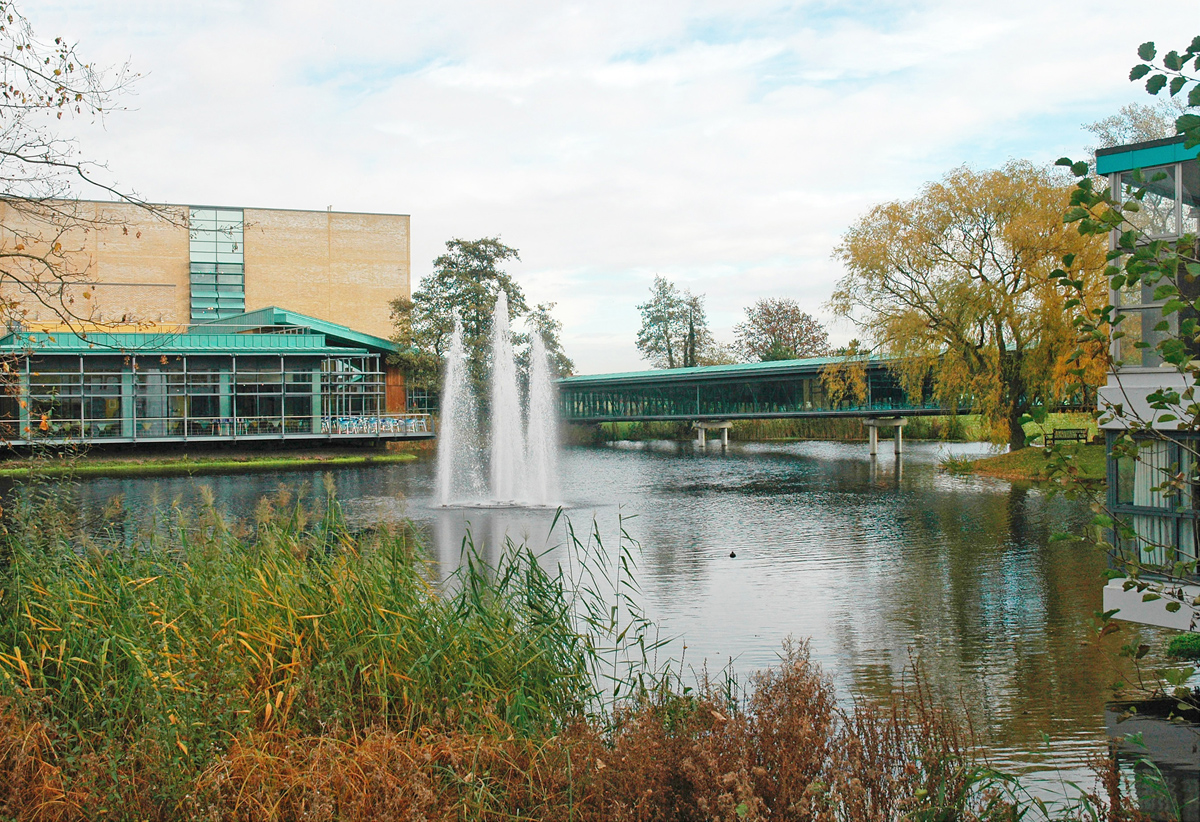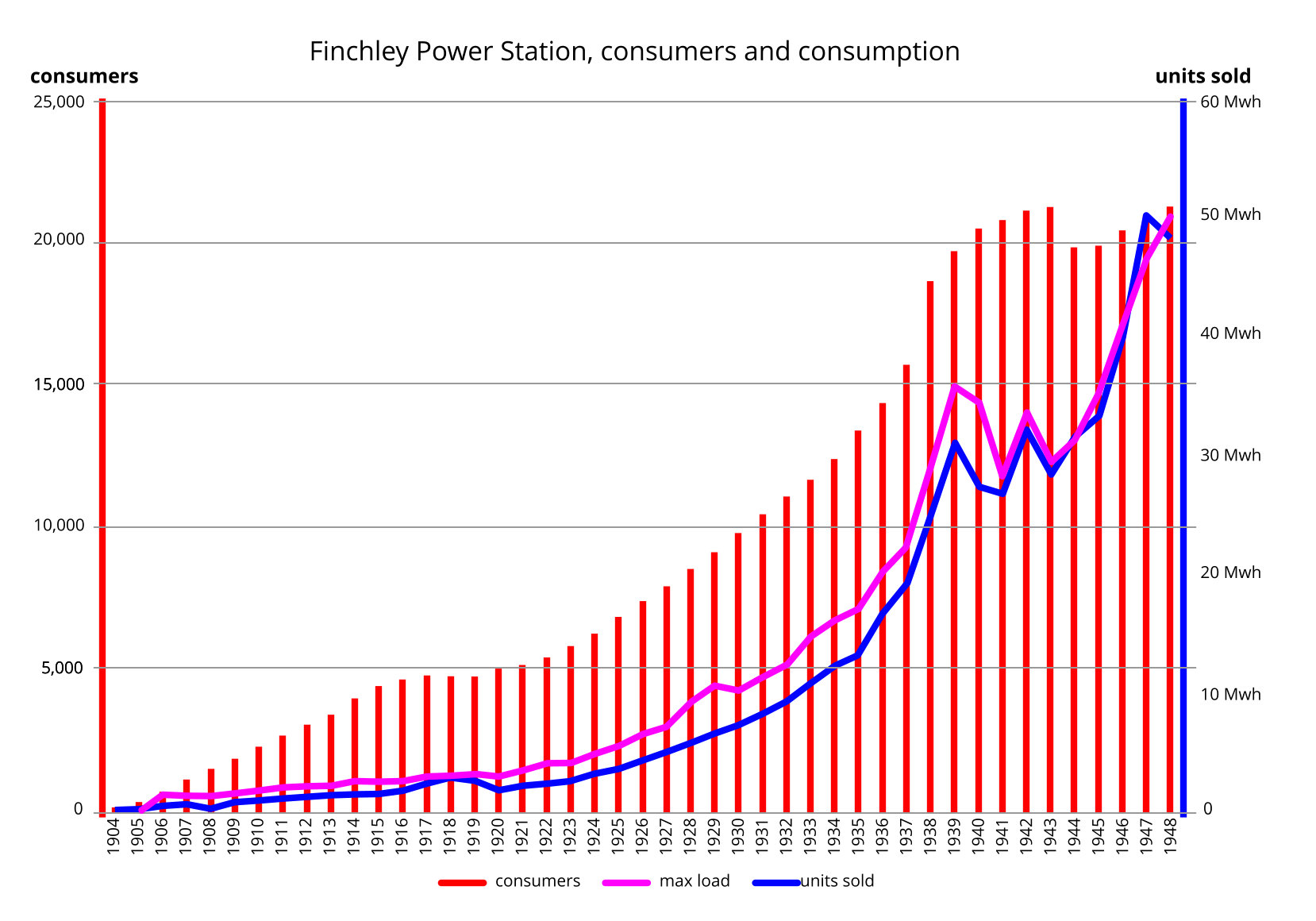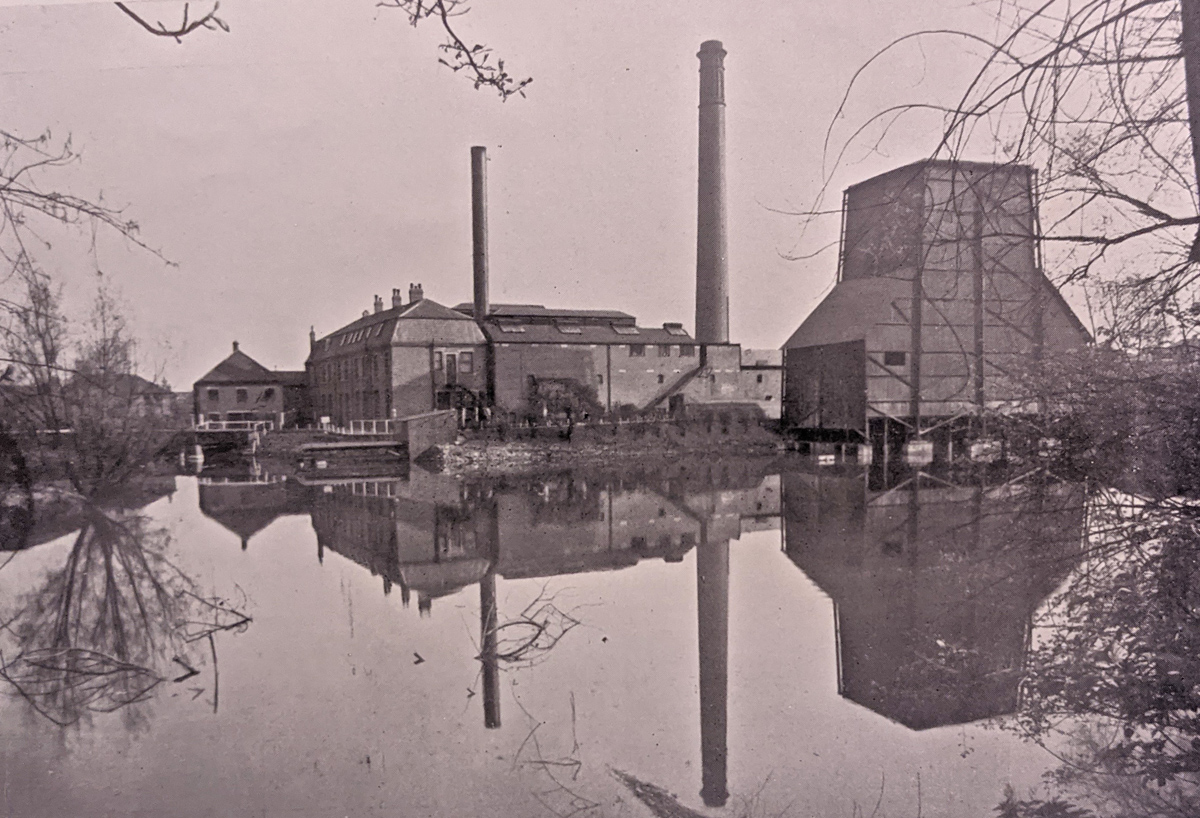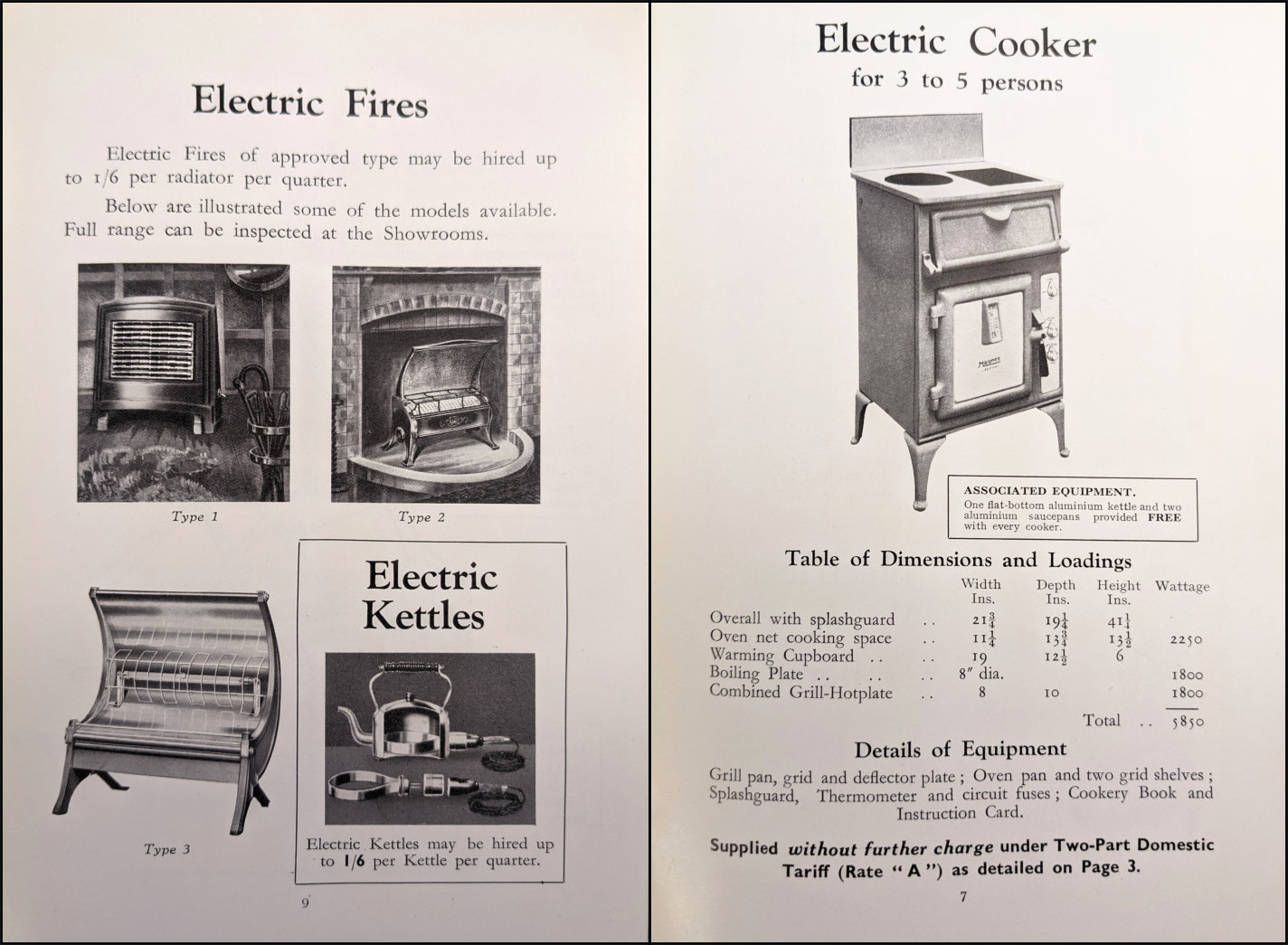 Electricity
first reached Finchley when the Finchley Electric Light Co. (FELCo) installed
a small gas-engine generating station near Mountfield Road to supply a few
local large houses. However, Finchley UDC had other plans.
Electricity
first reached Finchley when the Finchley Electric Light Co. (FELCo) installed
a small gas-engine generating station near Mountfield Road to supply a few
local large houses. However, Finchley UDC had other plans.
In 1899 the UDC obtained a provisional order under the 1882 Electric Lighting
Act and prepared to cut FELCo's cables, prevented only by litigation.
In 1902 the Finchley UDC drew up their own scheme and in 1903 it opened a
generating station on Squires Lane next to the railway, comprising three hand-fired
boilers, two 100kwatt steam generators and a 500-amp battery, supplying 130
houses by 1904. The earliest recorded tariffs were 4¾d per unit for
lighting and 2d per unit for power.
Some street lamps were then converted from gas to electricity and in 1905
the UDC bought out FELCo. Expansion was rapid; a 350kW steam set was installed
the year it opened, bringing production up to 550kW. In the early days power
was used almost exclusively for lighting. (Schemes to even the load by supplying
the trams ended when Northmet supplied power from Brimsdown.)
Power was distributed by a triple concentric armoured underground cable system,
250v DC, reaching 100 miles by 1912.
In 1905 there were two serious fires. The first in the boiler house, but the
most serious destroyed the offices, test room, including records, instruments
and furniture, such that the undertaking had to visit each household and note
down the readings from their meter cards.
In 1906/7 a temporary show room was opened in North Finchley to demonstrate new filament lamps.
To overcome water hardness problems (anathema to boilers) a 705 ft artesian well was sunk in 1911, capable of delivering 2,500 gallons per hour.
In 1914, in the interests of efficiency, the two original generators were replaced by a 200kw oil driven set,withf an additional set in 1916, and another at Whetstone substation in 1918. Four new pieces of kit were installed between 1920 and 1923 providing an additional 3,400kw and AC capability, and a cable link with Hornsey was added for security and flexibility. 1923 was the year Finchley was placed first out of 53 generating stations in terms of thermal efficiency.
 In
1925 the gradual conversion to AC power was started when the distribution
to a series of substations became AC (only to be converted back to DC at the
substations). It was also the year of the creation of the Central Electricity
Generating Board and National Grid.
In
1925 the gradual conversion to AC power was started when the distribution
to a series of substations became AC (only to be converted back to DC at the
substations). It was also the year of the creation of the Central Electricity
Generating Board and National Grid.
1926 saw the installation of a further turbo alternator, requiring a new boiler
plant, bringing total capacity to 6000Kw. Rapid expansion of Hampstead Garden
Suburb required further substations at Hill Rise, Cherry Tree Wood and Percy
Road; a further expansion in 1928/9 required an additional boiler and a water-cooling
tower, completed July 1929.
The London and Home Counties Joint Electricity Authority (LHCJEA) came into
being in 1925 with powers to acquire electricity undertakings and to supply
power in bulk. In 1931 they came to an arrangement with Finchley UDC, which
was struggling to meet demand, supplying additional power from Islington (Eden
Grove) via Hornsey, taking over finances but leaving Finchley to operate the
plant. This required three HT feeders and new switchgear and house, replacing
the original link. By 1936, bulk supply exceeded local generation by a factor
of ten.
THE 1936 report of the Committee on Electricity Distribution (McGowan report)
identified a large number of undertakings, with duplication of powers, differing
systems and tariffs, and very unequal facilities and recommended a substantial
measure of amalgamation, standardisation and co-ordination. Factors emphasised
were a progressive sales policy, service to consumers and adequate distribution,
changeover to AC, provision of showrooms and all types of domestic equipment
under hire purchase.
To forestall a takeover the council announced with fanfare in 1937 Finchley
Makes History, opening two showrooms on High Road North Finchley and
Falloden Way displaying a wide variety of domestic appliances; cookers were
offered under the domestic tariff, fires and kettles could be hired. It was
claimed to be the first undertaking to do so. By 1938, 8000 cookers had been
installed, appliances were available for cash and a repair service was instituted.
Work also began on laying new 4 core electric cables and the first AC supplies
were made to HGS.
In the same year Finchley came to an agreement with the LHCJEA to beef up their supply via a new 66,000-volt substation, on the site, directly from Islington, bypassing Hornsey.
 It was in 1938
that the cooling pond was stocked with Carp and Golden Orfe to combat the
mosquitos. The original stock of £35 yielded nearly £600 in sales
to breeders. At some time, the pond stocked itself with pike and other fish.
Fish thrived, and attracted anglers, who were given permits to fish. However,
on one hot summer’s day in the 1960s, (despite the depth of between
18 and 40 feet), there was a very strong fishy smell. Thousands of fish heads
could be seen poking up out of the water, unable to breathe through lack of
oxygen. A water shortage prevented fresh water being pumped in. The maintenance
team was kept busy for days rowing out and fishing out all the bodies to be
taken away by the barrow-load. A circulatory pump was installed for oxygenation
and thereafter always in use during summer months.
It was in 1938
that the cooling pond was stocked with Carp and Golden Orfe to combat the
mosquitos. The original stock of £35 yielded nearly £600 in sales
to breeders. At some time, the pond stocked itself with pike and other fish.
Fish thrived, and attracted anglers, who were given permits to fish. However,
on one hot summer’s day in the 1960s, (despite the depth of between
18 and 40 feet), there was a very strong fishy smell. Thousands of fish heads
could be seen poking up out of the water, unable to breathe through lack of
oxygen. A water shortage prevented fresh water being pumped in. The maintenance
team was kept busy for days rowing out and fishing out all the bodies to be
taken away by the barrow-load. A circulatory pump was installed for oxygenation
and thereafter always in use during summer months.
The lake of Winston Churchill's home at Chartwell was said to have been stocked with Golden Rudd from here during the War.
 During
WWII the power station escaped all but superficial damage and power supplies
were maintained. Conversion to AC resumed after the war. In 1948 Nationalisation
took place and Finchley became part of the Eastern Electricity Board. The
plant was closed and dismantled in 1958.
During
WWII the power station escaped all but superficial damage and power supplies
were maintained. Conversion to AC resumed after the war. In 1948 Nationalisation
took place and Finchley became part of the Eastern Electricity Board. The
plant was closed and dismantled in 1958.
After the demise of the Power Station, part of the site was occupied by the Southern Project Group of the CEGB. The Administrative Officer of the Project Group was a very keen gardener and had the grounds surrounding the lake professionally landscaped. The office was closed when CEGB moved their staff to Cheltenham in 1974.
Meanwhile, the Pentland Group had moved onto the site and subsequently had their award-winning head office constructed there, with the iconic building across the lake.
Sources: Finchley Corporation Electrical Undertaking
1903-1948, Finchley Makes History, Finchley Society Newsletter Oct 1990 supplement,
loose photos, metadyne.co.uk.
Photos: Electricity Works 1948, The lake in 2007, Appliances for hire.